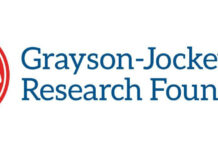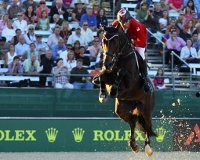Most major sports leagues in the United States, including the national leagues for football, baseball, soccer and basketball, have a concussion management protocol for athletes. Researchers at the University of Kentucky along with the Jockeys’ Guild are now working to add riders in Thoroughbred racing to that list.
“We want to give the jockeys who suffer head injuries the best science has to offer,” said Carl Mattacola, the UK professor who is overseeing the study. “An important first step towards that goal is to generate data from which an appropriate management protocol can be developed.”
Among the sport organizations that do have a concussion management protocol is the Fédération Equestre Internationale (FEI), the international governing body for equestrian sports. The protocol reads, in part:
- REST. The athlete must not return to riding a horse on the same day of a concussion;
- Any athlete suspected of having a concussion should be
evaluated by an appropriate health-care professional that day; - Any athlete with a concussion should be medically cleared by an appropriate health-care professional prior to resuming riding activities;
- After medical clearance, return to riding should follow a step-wise protocol with provisions for delay, based upon return of any signs or symptoms as detailed in page 3 of this document.
If the designated health care provider on site suspects that the athlete may have sustained a concussion, the only means for the athlete to return to riding is to be evaluated and cleared by a licensed medical doctor (M.D.), Osteopathic Physician (D.O.) or a Clinical Neuropsychologist with Concussion Training.
The emphasis on resting (and not riding) after a concussion is in line with research that has shown that the risk of long-term brain damage increases when more than one concussion occurs within 24 hours.
Leslie Potter is managing editor of horseillustrated.com. Follow her on Twitter: @LeslieInLex.







